|
Collecting Folk Art
by Bob Brooke
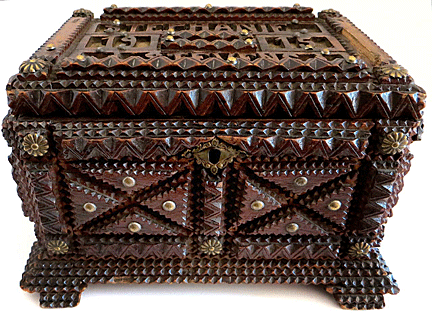 In
the realm of collecting antiques, there are a lot of cross-over
categories. One of these is folk art. Many see it as primitive while
others see it as a product of a specific culture or community. Mexican
Huichol beadwork is one example. Tramp art is another. But what exactly
fits in this category and how does a person go about collecting it? The
types of folk art seems endless. In
the realm of collecting antiques, there are a lot of cross-over
categories. One of these is folk art. Many see it as primitive while
others see it as a product of a specific culture or community. Mexican
Huichol beadwork is one example. Tramp art is another. But what exactly
fits in this category and how does a person go about collecting it? The
types of folk art seems endless.
Exactly What is Folk Art?
There many misconceptions about what folk art actually entails. Itís
best to begin with what it isnít. Folk art isnít mass-produced. While
itís often commercial today, it didnít start out that way.
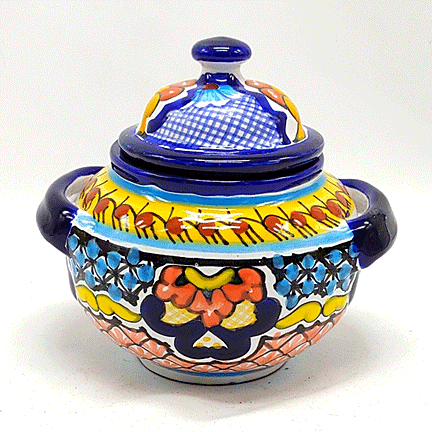 In
fact, folk art began with a need. In the case of Tramp Art, for
instance, men and women down on their luck during the Great Depression
fashioned utilitarian objects from scraps of woods and packing crates
that they found. They, in turn, sold these items to earn some money. And
no two pieces were alike. In
fact, folk art began with a need. In the case of Tramp Art, for
instance, men and women down on their luck during the Great Depression
fashioned utilitarian objects from scraps of woods and packing crates
that they found. They, in turn, sold these items to earn some money. And
no two pieces were alike.
Folk art encompasses such universal needs as textiles and costumes,
pottery, and furniture, as well as scarecrows and weathervanes.
Thatís another thing about folk art. These objects differ from other
antiques in that theyíre handcrafted by a single artisan or team of
artisans. Individuals made each piece by hand, sometimes with training,
but mostly by imitating the work of family members or serving as
apprentices in small workshops.
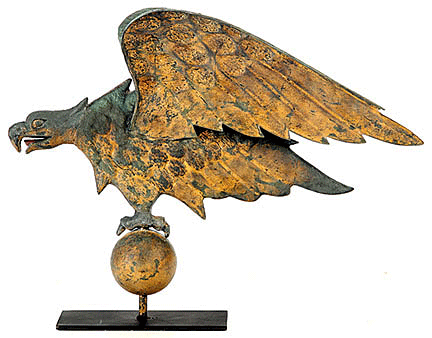 Folk
art encompasses all forms of visual art as its influenced by folk
culture. Generally the objects have some sort of practical utility,
rather than being exclusively decorative. Folk
art encompasses all forms of visual art as its influenced by folk
culture. Generally the objects have some sort of practical utility,
rather than being exclusively decorative.
Decorative art experts define folk art as unsophisticated art made by
simpler people. The concept of folk art as a category began in the 19th
century. It encompasses both folklore and cultural heritage.
Historically, most objects have been created and used within a
traditional community. Made to fill a need, these objects were shaped by
the values and standards passed down from generation to generation.
Most of the time, an individual artisan made an object while working
within an established cultural framework using a recognizable style and
method. This enabled items to be recognized and attributed to a single
individual or workshop.
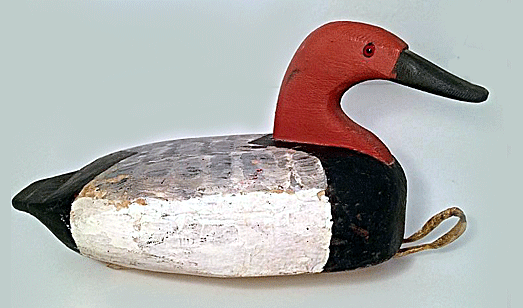
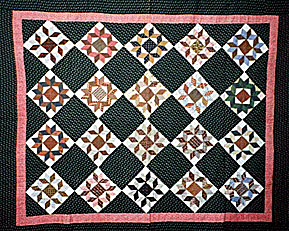 An
artisanís individual creativity played an important role in preserving
traditional forms and motifs. People continued to practice many folk art
traditions like quilting and decoy carving, allowing new forms to
emerge. An
artisanís individual creativity played an important role in preserving
traditional forms and motifs. People continued to practice many folk art
traditions like quilting and decoy carving, allowing new forms to
emerge.
In many cases, folk artists werenít self-taught. Folk art didnít aim for
individualistic expression. Instead, the concept of group art implied
that artists acquired their abilities, both manual and intellectual, at
least in part from communication with others.
In communities or groups with strong traditions, the works of different
artists were more similar than they were different, more uniform than
personal. Tradition in folk art emerged through the passing of
information from one generation to another. Through generations of
family lines, family members passed down the knowledge, information,
skills and tools needed to continue the creation of folk art.
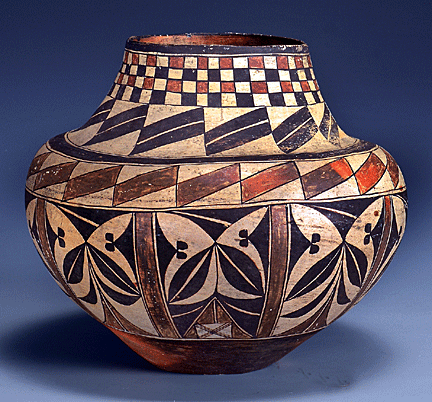 Being
part of the community, the craftsperson reflected on the community's
cultural aesthetics, taking into consideration the community's response
to the handicraft. While an artisan could create an object to match the
community's expectations, he or she could also design it to reflect his
or her own meaning. Being
part of the community, the craftsperson reflected on the community's
cultural aesthetics, taking into consideration the community's response
to the handicraft. While an artisan could create an object to match the
community's expectations, he or she could also design it to reflect his
or her own meaning.
Folk art came in different shapes, sizes and forms. It traditionally
used local materials and reproduced familiar shapes and forms. Because
it was part of the cultural life of a community, folk art from different
communities was different. This makes it easier to identify pieces based
on their place of origin, shape, pattern, and decoration.
Folk art wasnít about individuals creating unique items, but about
skilled artisans who demonstrated an exceptional skill, improved over
years of practice working in their chosen medium.
History of Folk Art
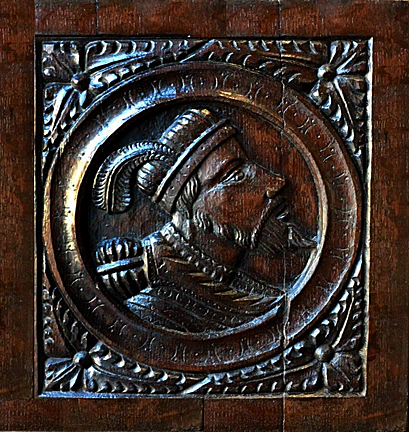 Folk
art had been around long before people created the category in the 19th
century. Folk
art had been around long before people created the category in the 19th
century.
Before the 16th century, individual artisans, each more or less skilled
in their craft, created useful objects that were also beautiful.
Woodcarving was especially prevalent, both in England and in Continental
Europe.
As the Renaissance dawned, a change happened in the art world. People
began to distinguish functional objects from those created within what
came to be known as fine art. From the late 15th to the late 18th
century the emerging middle class in Europe came into their own and
sought ways to display their newly minted wealth and power.
Visual works became known as works of art as opposed to the multitude of
beautifully crafted objects created during the Middle ages. Art became
exclusive, created by gifted individuals for the limited few. During the
Middle Ages, people made the distinction between the practical and the
beautiful in the evaluation of crafted products. Art became reserved for
the wealthy and everything utilitarian wasnít considered art. Fine art
consisted mostly of painting and sculpture. All other art, including
crafts, became primitive art or folk art, implying inferior objects
produced by craftsmen rather than artists. This lesser category also
included folk art produced in lands outside of Europe where the only
works considering were those of the masters.
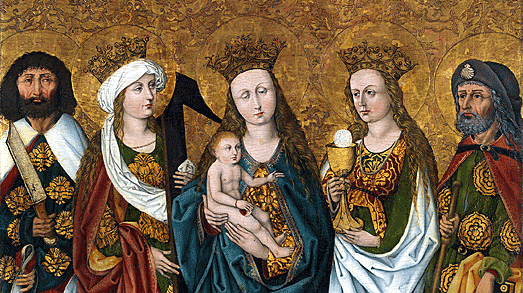
An earlier, more general understanding of folk art developed in America
during the Colonial Revival period at the beginning of the 20th century.
Between the decades 1880 and 1940, Americans looked back nostalgically
to their rural agricultural beginnings. All things antiquated, handmade,
or old-fashioned came into vogue, particularly by the wealthier people
along the East Coast. Removed from their original context of production
and utility within the local community, these objects were valued as
standalone curiosities from an earlier time in American history.
Originally called antiques, they became re-labeled as folk art during
the first decades of the 20th century by both museum professionals and
collectors. Folk became a marketing term intended to separate a
commodity from the fine arts above and the antiques below.

Collecting Folk Art
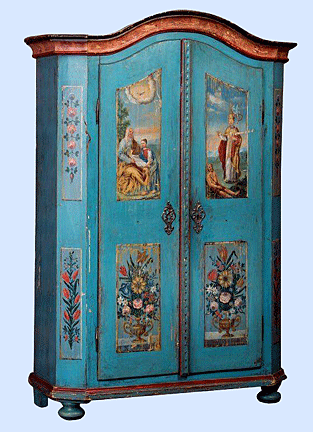 Folk
art doesnít need to be old to be collected. It continues to be
handcrafted today in many regions of the world. Folk
art doesnít need to be old to be collected. It continues to be
handcrafted today in many regions of the world.
If a piece has charm, it has charm. That said, Georgian painted country
furniture has perennial appeal, and prices of primitive British rustic
furniture, chairs and tables, already highly prized, have risen even
more. Once again, there has been strong interest and appreciation of the
amazing traditions of folk painted furniture from Europe and a
willingness as never before to mix styles and be bold with color.
The demand for painted folk furniture tends to vary with the current
trends in interior design. Furniture tends toward basic, repeated
shapes, which may be left purely functional but are often extensively
carved or painted. It was very popular when first rediscovered in the
1980s and 1990s, then a decade later interiors went minimal and grey, so
colorful folk pieces became harder to place. Lately, there has been a
new appreciation and interest in folk art and a re-introduction of color
into interior design schemes.
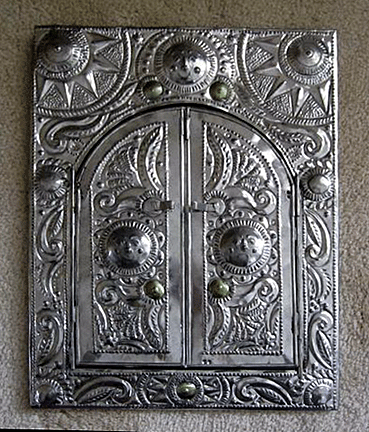 Some
folk art lends itself well to home decor while other pieces are meant to
be collected, displayed, and admired. In metalwork, for example,
craftsmen also used the same materials to produce tools and other
essentials, as well as such art forms as toleware, or painted tin,
incised copper or silver, and even pewter toys. Some
folk art lends itself well to home decor while other pieces are meant to
be collected, displayed, and admired. In metalwork, for example,
craftsmen also used the same materials to produce tools and other
essentials, as well as such art forms as toleware, or painted tin,
incised copper or silver, and even pewter toys.
While folk art may be the umbrella category, there are hundreds of
subcategoriesó painted furniture, laundry beaters, molds, decorated
eggs, decoys, powder horns, trade signs, scrimshaw, and shipsí
figureheads, and circus wagons, to name a few.
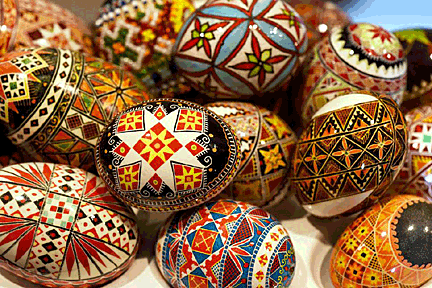 With
such a wide variety of folk art objects to choose from, it makes more
sense to focus on one or two subcategories when starting a collection.
Some items may be easier to display than others. While a collection of
Ukranian decorated Easter eggs may not take up much space in a display
cabinet, a collection of circus wagons would require a substantial
amount of property to display. With
such a wide variety of folk art objects to choose from, it makes more
sense to focus on one or two subcategories when starting a collection.
Some items may be easier to display than others. While a collection of
Ukranian decorated Easter eggs may not take up much space in a display
cabinet, a collection of circus wagons would require a substantial
amount of property to display.
What to Avoid
When it comes to folk art that costs a lot of money, like a Welsh
lovespoon, there are bound to be fakes, so bear that in mind. Stick to
established dealers and pay the higher price.

Ask the same types of questions as if buying a pricey antique. Because
many people buy folk art objects online, itís easy to fake them. Online
buying necessitates using photographs to choose an object to purchase.
Itís difficult to know if itís the original paint or if some part of an
object is rotten or wormy, or has lots of replaced parts..
< Back to Collecting Archives
Next Article >
|
